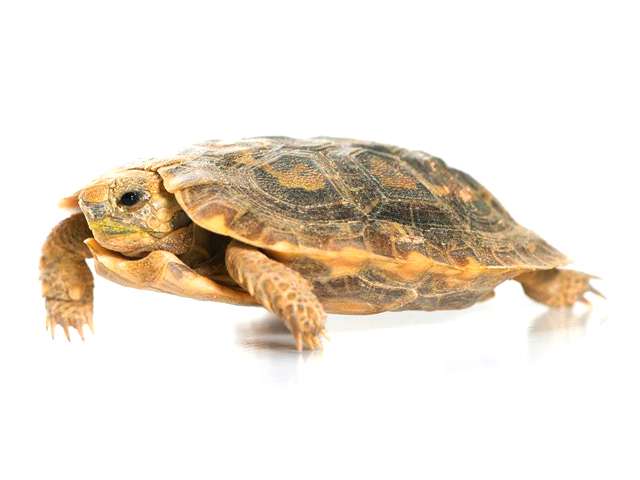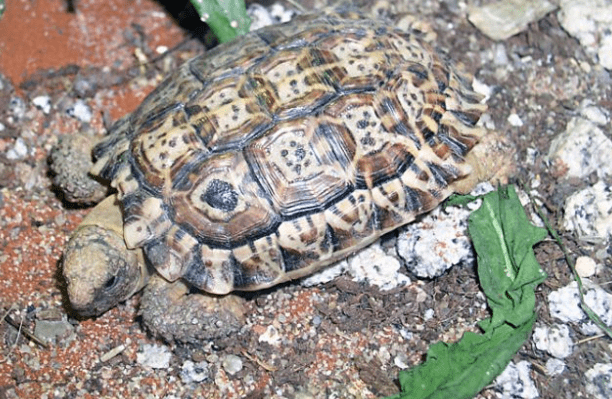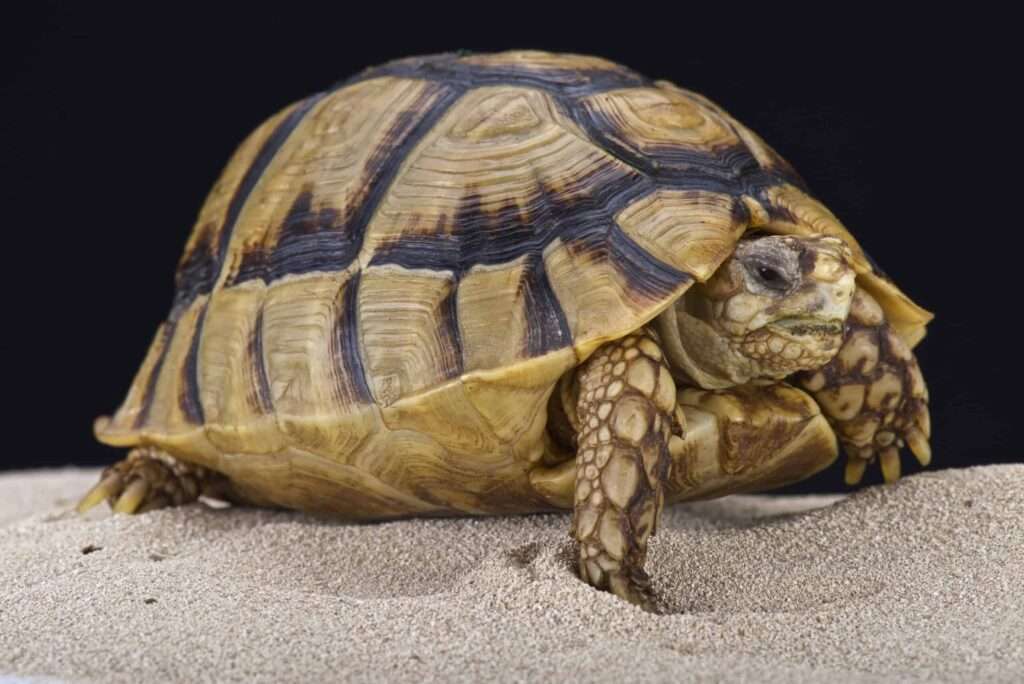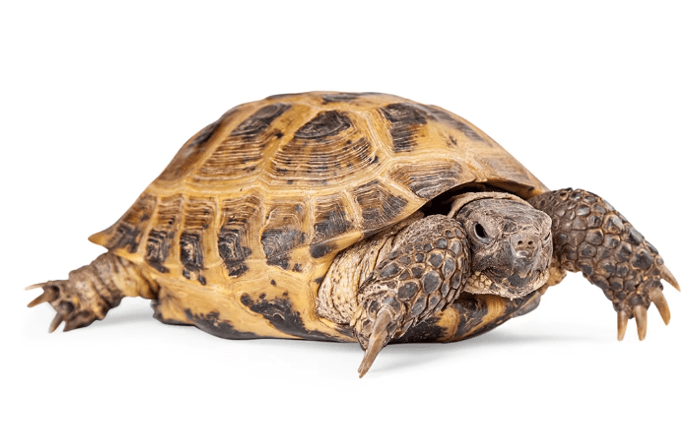
Description
A species of flat-shelled tortoise belonging to the Testudinidae family is the pancake tortoise (Malacochersus tornieri). The shell of a pancake turtle typically has patterns in various hues of brown that serve as camouflage in its rocky habitat. Its plastron, or belly, is a light yellow, while the majority of its head, limbs, and tail are golden-brown in colour. They reach a maximum height of 7 inches (17.8 centimetres).
Habitat
Tanzania’s northern and eastern regions, as well as southern Kenya, are home to pancake tortoises. After being brought to Zimbabwe, they also exist in Zambia and Zimbabwe. Their typical habitats include the rocky outcrops and hills of arid scrublands, the flat grasslands or dry savannahs of sub-tropical and tropical regions, as well as the sparsely vegetated semi-arid deserts.
Behavior
The Pancake tortoise has great climbing skills. Due to the flexibility and lightness of its shell, it can quickly creep into rock cracks when danger approaches. It may readily flee to safety because it is always located close to its rocky home. They are most active in the morning, emerging to feed and bask. They rarely leave their refuge for more than an hour at a period, during which they are quite active and mobile. The colonies that pancake tortoises prefer to reside in are usually remote from one another. They might all be located in the same rocky outcrop or crevice. These tortoises do not hibernate, however they will aestivate or sleep behind flattened rocks in the hot summer months.

Keeping as Pet
Enclosure
If you reside in a climate where your tortoise may thrive, terrariums or an outdoor habitat will work nicely. The minimum size for each adult tortoise should be a well-ventilated 40-gallon terrarium and a 4′ x 4′ outdoor enclosure that is at least 1 foot tall. For each extra tortoise in the enclosure, increase the space by 2 square feet.
As a skilled climber, the pancake tortoise needs a screen at the top of its habitat to prevent it from climbing out or from predators entering. When the weather becomes colder, make careful to bring these tortoises inside because they cannot hibernate.
Additionally, you need to give your pancake turtle a spot to climb and hide. Build your own rock pile (shale would work well because it’s flat and simple to stack) or purchase a fake den that can serve as both a shelter and a tanning spot. The ideal hiding places for your tortoise are two separate places. Usually, one in the hotter portion of the terrarium and one in the cool (more on temperature later).
Water and Humidity
You must first give your pancake tortoise a shallow dish of water that is sizable enough for it to soak in. However, since they frequently poop in this bowl and the water needs to be kept clean at all times, be ready to clean it several times every day. Naturally, in the long term, this also makes cleaning the enclosure simpler. Maintaining a large distance between the food and water bowls will assist.
Adult tortoises are not affected by humidity, therefore spraying the enclosure is not necessary.
Diet
In the wild, the pancake tortoise often grazes on a variety of grasses. It also does well on freshly cut grass, vegetables, and greens. Hay, kale, endive, carrots, dandelion, squash, leaves, and so on. Multivitamins and calcium supplements should be included to their diet.
You can occasionally treat them to fruit, but often only a tiny bit once a month. As long as you haven’t sprayed your lawn with chemicals, you can even let them graze on it if you keep them outside. They like dandelion flowers, so keep that in mind. They also need a lot of calcium, so every meal should include a reptile calcium supplement.
Table





